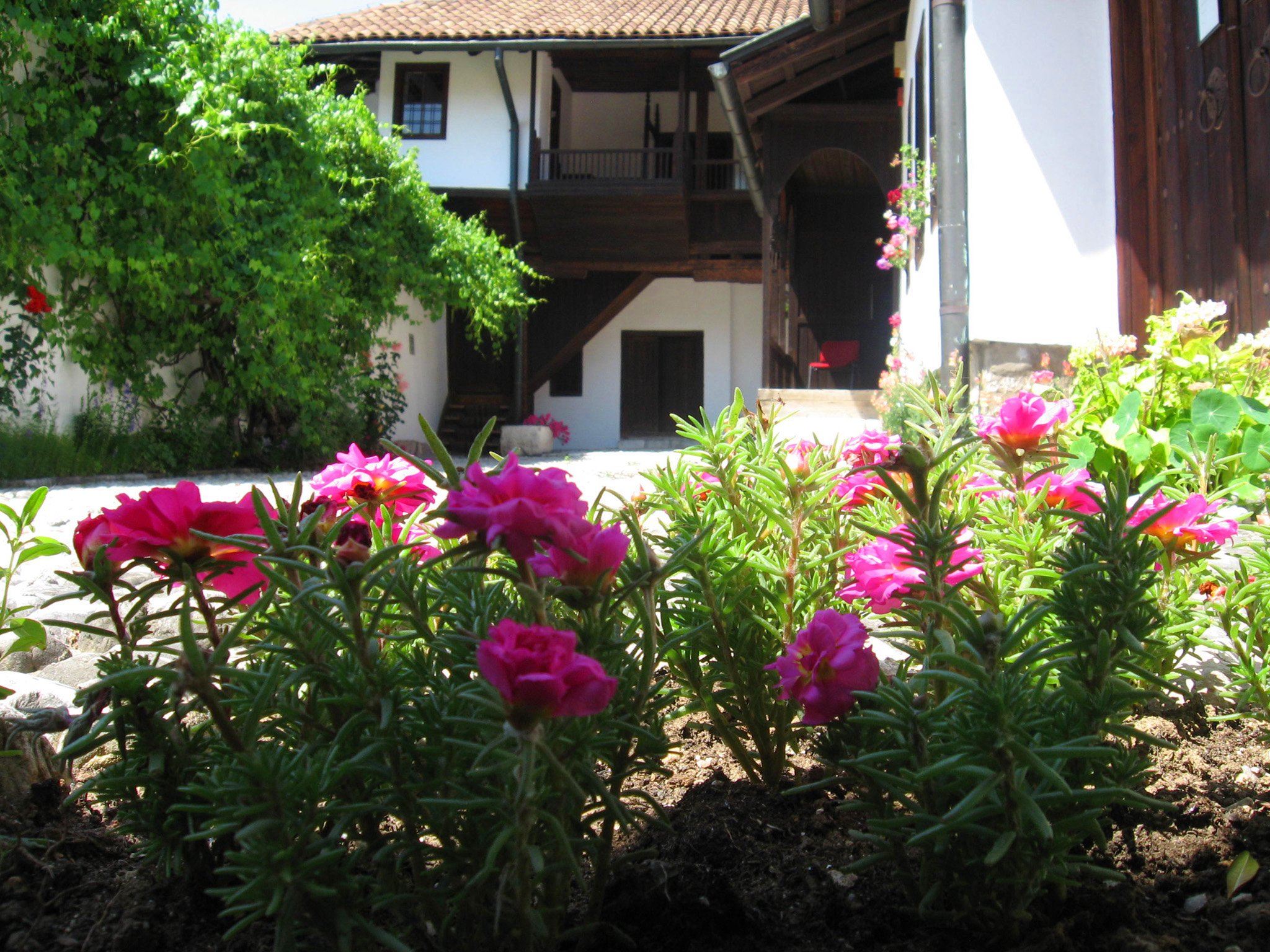
BOSNIAN FRONT YARD AND GARDEN
Author: Mustafa Arslanović, museum educator, Museum of Sarajevo • Illustration: Male front yard, Svrzo’s house in Sarajevo • Photos: Mustafa Arslanović

Bosnians used to build light and cheerful houses surrounded by greenery and gardens. Besides the massive stone structure on the ground floor, they are characterized by the combination of wood and adobe in building, and are covered with hipped roof covered with shingles or roof tiles. They were separated from the street with a high wall or wooden fences. For this reason, they apparently seemed isolated, although they were connected with each other through gardens, the so-called komšipkas (doors to neighbors)
In urban settings, houses were typically built outside the downtown as the economic, administrative and social center. Every house had its front yard and its garden, with high and low vegetation. The vegetation was only continuation of the planted high trees beside religious buildings, mostly mosques or planted lines of trees along rivers, or simply wild vegetation which spread from the downtown toward residential neighborhoods, i.e. mahalas. Thus, it seemed as if these houses had been only inserted in the natural surroundings, and the junction of greenery and the building itself created a human and pleasant environment for living.
The house was entered through the front yard gate, which was not painted, i.e. it had the natural color of wood, and was decorated with wrought iron. The front yard was paved with cobblestone, i.e. with stone slabs or pebbles from rivers. It had the central place within the residential complex. By its position and function, it was the continuation of the house, since in the summer great part of daily activities went on in the front yard. Its size primarily depended on the owner’s assets. Geometrically, it was almost always regular, i.e. rectangular, though each one was unique and incomparable, since it reflected inventiveness of the lady of the house and her daughters. The front yard as the connection with public life, i.e. the street, had also a significant role in the communication to the interior. It was connected to rooms by the hajat (half-open lobby), which led to the single-flight staircase and to the floor (if there was one), and which was also a link to gardens. The Bosnian house was always painted white, both inside and outside. Besides the prevailing white, there was also the natural color of wood, which was often used in building houses, the greyish color of cobblestone and the green color of decorative bushes, mostly boxwood. It is the background of these colors that best emphasize red flowers in various nuances, which make this color favorite.
Male front yard (Svrzo’s house in Sarajevo)
Planting was based on the well-established practice and experiences, and people took account of the place of planting due to specific needs of a given plant for humidity and light. In front yards, flowers were planted in pervazes (rectangular flowerbeds by walls separated with rocks, typically turned eastward, so that flowers could have enough sunlight) and čičekluks (areas for flowers bordered with pebbles). Bushy plants: boxwood or mock privet, rainy dragon or fiery bush, or a cultivated fruit tree, such as apricot or apple were planted in čičekluks, while in pervazes, besides popular boxwoods, people mostly planted tiny flowers: nasturtium, Turkish carnation, lily-of-the-valley, snapdragon, aster, larkspur, carnation, hyacinth, henna, impatiens, portulaca and tulips, as well as some bigger ones: peony, chrysanthemum, lily or bleeding heart. The vine, or ivy and unavoidable morning glory typically spread along the front yard wall.
Vegetation in front yards primarily had the decorative purpose, while in gardens it had a different character, since its content was a combination of fruits, vegetables and flowers. Its decorative purpose was primarily achieved by means of đulberšećer roses (roses the petals of which are used for making preserves), which were planted along walls, while other flowers grew without a particular order, mixed with fruits and vegetables: dahlias, sunflower, lilac, irises and others. While in front yards tidiness standards were high, since cobblestone was washed, spaces between rocks were weeded to remove self-grown species and preserve flowers, in gardens one could often find self-grown plants such as marshmallow, tree of heaven, elder and others. Decorative bushes that were intentionally planted included jasmine, Russian olive, lilac and guelder rose.
Quantities of fruits and vegetables were adjusted to needs of the household. In Bosnian gardens, people planted beans, onions and garlic, eggplants, potatoes, a couple of pumpkins, leeks, some parsley, parsnip, celery and others. Terminology of various kinds of fruits is rich in Bosnia and indicates both local names and foreign influences, for example apples: petrovača, šarenika, senabija; pears: redolent-mišćija, jeribasma, sultanija, malatija, karamanka, takiša; plums: ranka, požegača, prskulja, bardaklija; mulberries: murgorast, white, black and culitvated; quinces: male and female. Gardens were not only a source of food for the household but were also largely used for extending the residents’ living space, which spread from the living room, through half-covered porch, cobbled front yard, all the way to the garden.
Small garden (Svrzo’s house in Sarajevo)
Over time, a significant number of plants which used to adorn Bosnian front yards and gardens fell out of use. The house of the past (Oriental-Bosnian type) which, together with the front yard and the garden constituted the harmony of the family home receded before modernization. All of us are therefore facing the task of protecting and preserving what has remained, and presenting them where we have the opportunity to do so.
References:
Grabrijan, Neidhart, Arhitektura Bosne i put u savremeno, Ljubljana, 1957.
Kulenović, M., Pejzažno naslijeđe Sarajeva sa posebnim osvrtom na teritorij Općine Stari Grad, 2002.
Drljević, H., Bosanska cvjetna avlija, Fakultet poljoprivrednih znanosti Sveučilišta u Zagrebu, 1985.
Černjavski-Janjić, Z., “Sarajevske bašče i avlije”, Prilozi za proučavanje istorije Sarajeva, vol. IV, Sarajevo, 1974.

